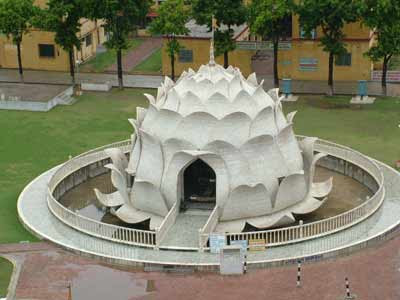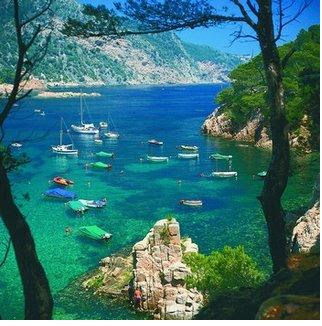Whether you view Turkey as a bridge or a barrier between Europe and Asia, there is no doubt that its unique geographical location, poised as it is by the Christian West and Muslim East, gives it an extra frisson when compared with competing Mediterranean destinations such as Italy and Greece. In predominantly Muslim Turkey, for example, you may well find yourself briefly stirred around dawn by the atmospheric sound of the call to prayer. But as it is also a firmly secular state, you’ll more than likely be enjoying a chilled glass of white wine or cold beer with your meal by the time the dusk prayers emanate from the minaret of the nearest mosque.
In part owing to their Islamic heritage, in part to their origins as nomadic herdsmen on the steppes of Central Asia, the Turks are an incredibly hospitable, open and friendly people. Sitting down for a glass of tea served in an elegant, tulip-shaped glass with a shopkeeper in a local bazaar is not usually just a ploy to give him more time to make his sales pitch, it’s simply part and parcel of Turkish culture. Drive through a village in search of some romantically located ancient ruins, and stop to ask directions, and you may well not get an intelligible answer (English is not widely spoken outside the resorts and large cities) but you may well find yourself plied with free teas in the local café.
The Byzantine Church of the Three Crosses has spectacular carvings and paintings.
But the thrill of holidaying in a different culture amongst some of the world’s friendliest people is not sufficient to explain why Turkey attracts some 35 million visitors a year. With over 1,700 miles of Aegean and almost 1,000 miles of Mediterranean coastline, Turkey is a major draw for visitors looking for a beach-based holiday.
Scroll down for expert advice on getting to Turkey
In the Aegean region, the mountains of the Anatolian interior (Anatolia is a vast, tilting tableland of steppe and mountain running for almost a thousand miles to the borders with Iran) run at right angles to the sea, giving a beautifully indented coastline of bays and coves, promontories and peninsulas – at its dramatic best around the popular resort towns of Bodrum and Marmaris. The mountains plunge right into the sea in many places around the mountainous southwest corner of the country, where the Aegean merges into the Mediterranean, whilst heading east ofAntalya, a broad plain fronting the Taurus mountain chain is fringed by endless sandy beaches.
Despite vows not to go the same way as Spain, tourist development has made a huge impact – particularly around Antalya, where all-inclusive hotels and golf courses have irrevocably changed the landscape. The rockier shores to the south-west Med and south Aegean have been more resistant to change, however, with resorts such as Kaş, Kalkan, Gelemiş (Patara), Dalyan and Bodrum preserving much of their charm. Whilst most visitors are content to sunbathe, swim and take the odd boat tour, there are plenty of opportunities for diving, windsurfing and sea-kayaking. The gloriously rocky coastline of the southwest also lends itself to gulet(yacht) tours; at their most luxurious these vessels are floating villas of self-indulgence.
The ancient city of Perge, east of Antalya, was founded in about 1,000 BC.
.
Another major joy of exploring Turkey is its ancient sites – the Aegean and Mediterranean littoral is liberally strewn with superb Graeco-Roman ruins, from well-know places like Troy and Ephesus to little-visited wonders such asArykanda and Sagalassos. Most sites are easy enough to visit either on an organised tour or by hire car, although some are best approached by boat. Readily accessible from many coastal resorts are geological wonders such as the incredible travertine basins and hot springs at Pammukale, and from Antalya the beautiful Turkish lakeland around Eğirdir gives cooling respite from the coastal summer heat. The Lycian, Carian and St Paul’s marked trails have helped open up the mountains behind the coast to walkers; winter time visitors may be attracted by ski resorts at Saklikent and Davraz.
The eerie travertine basins and hot springs at Pammukale are other-worldly.
Turkey is a huge country, and with so many repeat visitors it is not surprising that after initial forays to the coastal belt, many find themselves lured by the austere landscapes of Anatolia. The rock-cut Byzantine churches and weird volcanic rock formations of Cappadocia, now home to hundreds of "cave" boutique hotels, is the most popular inland region. Those with a taste for wilder scenery and/or less well known civilisations head to the Hittite heartlands east of Ankara, the Urartian fortresses and Armenian churches around the impossibly blue waters of Lake Van, and the "cradle of civilisation", the Euphrates and Tigris basins of the south-east. These regions are a long way - in more than distance - from the flesh-pots of the coast, but they are absolutely fascinating.
Wherever you go in Turkey, and whether you stay in a posh villa or modest guesthouse, criss-cross the land in a hired car or go on an organised coach tour, you’ll be sure of a warm welcome, and come away with an intriguing insight into a country that is neither East nor West - but wholly its own.










